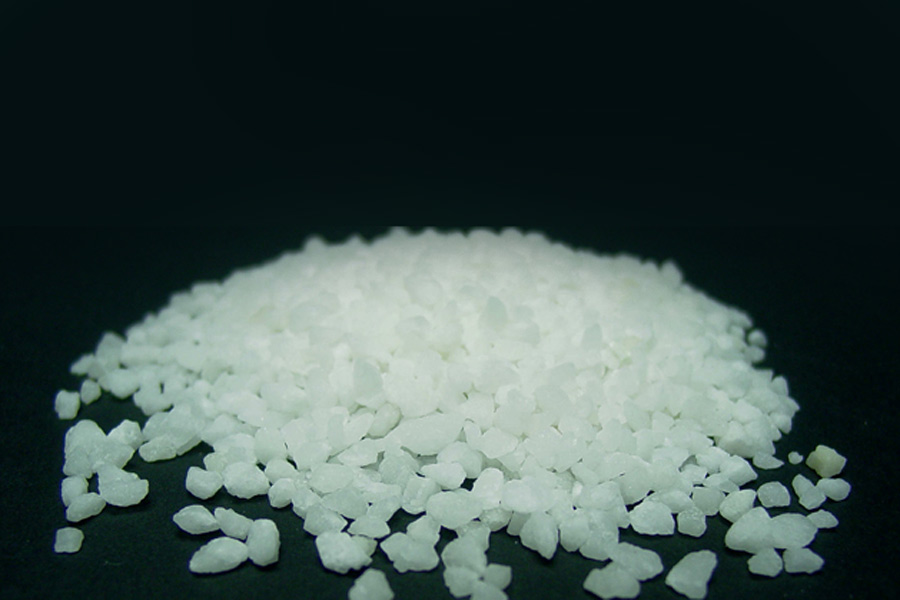
The chemical compound potassium chloride (KCl) is a metal halide salt composed of potassium and chlorine. In its pure state it is odorless. In it’s pure state, it is a white or colorless vitreous crystal, with a crystal structure that cleaves easily in three directions. Potassium chloride crystals are face-centered cubic. Potassium chloride is also referred to as muriate of potash and potash, particularly when used as a fertilizer. Potash varies in color from pink or red to white depending on the mining and recovery process used to extract it. Typically, solution mined potassium chloride is white and mechanically mined potassium chloride is red. The red color is usually iron contamination, but may also be other metal chloride impurities. This product might be called red potash as well.
» Potassium Chloride MSDS Sheet (PDF)
MELTING PERFORMANCE
In deicing terms, we tend to view Potassium Chloride in the same category as urea because it, too, is a common fertilizer ingredient as a source of potassium, however like urea, as an ice melter it’s ok but not great. Potassium Chloride has a relatively high working temperature (25F) and high eutectic point at (12.7F), which makes it not particularly well suited for snow and ice control, but the fact that it’s a fertilizer macronutrient seems to draw some perceived benefit for winter use. All chemical deicers will help remove snow or ice, but can also cause damage to the surrounding environment through a variety of methods.
Application of any chemical de-icer can help to increase the number of freeze-thaw cycles and potentially adversely affect concrete surfaces through spalling damage. The chlorides in potassium chloride can corrode metals in concrete reinforcement bar and exposed railings and steps; the potassium and chlorine molecules can pollute streams and lakes through run-off water and contribute to eutrophication concerns; potash can damage soil mineral balance; and, it can stunt or kill plants adjacent to de-iced areas.